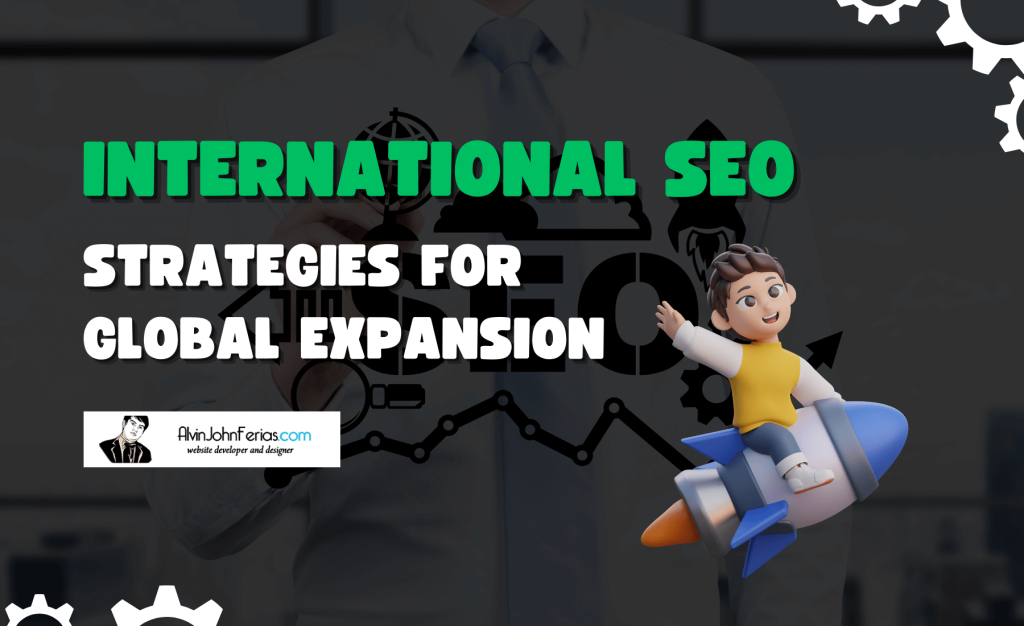Have you ever dreamt of selling your amazing products or services to a worldwide audience? The internet has revolutionized global commerce, making it possible for even small businesses to reach customers across the globe. But with great opportunity comes a challenge: how do you ensure people in other countries can find your business online? That’s where International SEO comes in!
International SEO is all about optimizing your website to be visible in search results for users in specific countries. It’s like having a digital storefront on a bustling international marketplace, but instead of translating your signs and product descriptions into different languages, you’re making adjustments to your website’s content and technical structure to resonate with local audiences and search engines.
What is International SEO?
Imagine you have an online store filled with fantastic clothes. But your website is only in English, and most of the labels are in English too. International SEO is like translating everything into the languages of your target countries. So, French customers would see “robes” instead of “dresses,” and Spanish customers would see “faldas” instead of “skirts.” You might even include sizing charts that convert between different measurement systems, like inches and centimeters. In essence, International SEO tailors your website to the specific needs and preferences of your audience in each country.
Why is International SEO Important?
If you want to reach new customers abroad, international SEO is crucial. It can help you:
- Sell More: Attract a wider audience and boost your sales.
- Build Brand Awareness: Make your brand a recognized name on a global scale.
- Stay Competitive: Many businesses compete online. International SEO helps you stand out.
Challenges of International SEO
Going global comes with its own set of hurdles, but with careful planning and execution, you can overcome them. Here are some of the key challenges to consider:
- Language Barriers: Bridging the language gap is crucial for international SEO. Not only do you need to translate your website content into the languages of your target markets, but you also need to ensure the translations are accurate, culturally appropriate, and resonate with your target audience. Consider regional variations within a language, for example, the difference between British and American English.
- Cultural Differences: What works in one country might not work in another. Understanding cultural nuances is essential for crafting messages and visuals that will appeal to your target audience. For instance, colors can have different meanings in different cultures. Red might symbolize good luck in China, but danger in some other countries. Take the time to research cultural sensitivities and adapt your website content accordingly.
- Currency Matters: International business involves dealing with different currencies and legal requirements. Your website should display prices in the local currency of your target markets and ensure your checkout process is compliant with local regulations. You might also want to consider offering multiple payment options popular in different countries.
- Tech Talk: There are technical aspects of international SEO that need to be addressed. For example, you’ll need to configure your website to target specific countries or regions. This can involve using country-code top-level domains (like .co.uk for the UK) or implementing hreflang tags to help search engines understand which version of your website is intended for each country. Additionally, optimizing your website for fast loading times around the world is essential for a positive user experience.
Conquering the Challenges: Your International SEO Toolkit
Target Specific Countries:
- Market Research: Research and choose countries with high potential for your business.
- Local Needs: Consider local preferences, regulations, and cultural nuances.
- Prioritization: Prioritize countries based on your business goals and resources.
Language Localization:
- Professional Translation: Use professional translation services to ensure accurate and culturally appropriate translations.
- Regional Variations: Consider regional variations within languages (e.g., British English vs. American English).
- Local Idioms and Slang: Use local idioms and slang to connect with your audience on a deeper level.
Country-Specific Domains:
- Benefits: Country-specific domains (like .co.uk for the UK) can signal to search engines that your website is targeted to that specific country.
- Drawbacks: Managing multiple domains can be complex. Consider the benefits and drawbacks before deciding.
Hreflang Tags:
- Tell Search Engines: Hreflang tags help search engines understand which version of your website is intended for each language and region.
- Accurate Implementation: Ensure accurate implementation to avoid confusion and potential penalties.
Localize Content:
- Adapt to Local Preferences: Use local units of measurement, currency, and time zones.
- Cultural Sensitivity: Adapt content to local cultural sensitivities and preferences.
- Local Contact Information: Include local contact information and address to build trust with your audience.
Build Local Backlinks:
- Local Authority: Acquire backlinks from reputable websites within your target countries.
- Local Partnerships: Build relationships with local influencers and media outlets to generate backlinks and brand awareness.
Technical Considerations for Global Success
- Server Speed: Choose server locations that ensure fast website loading times for your target audience.
- Currency Converter: Make it easy for international customers by offering a currency converter on your website.
- Local Payment Options: Accept payment methods popular in your target countries.
International SEO Tools for Your Journey
There are many tools to help you with international SEO:
- Keyword Research Tools: Find relevant keywords people search for in different languages.
- Website Speed Testing Tools: Ensure your website loads quickly for users worldwide.
- SEO Audit Tools: Identify and fix any international SEO issues on your website.
Developing a strong international SEO strategy takes time and effort, but the rewards are vast. By following these tips and using the available tools, you can open doors to new markets and take your business global. So, what are you waiting for? Start your international SEO journey today and watch your website climb search engine rankings around the world!
Ready to take your business global? I’m Alvin John Ferias, an SEO expert with the knowledge and experience to help you achieve international SEO success. Let’s work together to dominate global search results.





